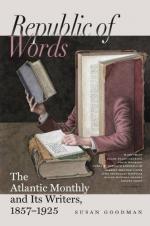We do not, therefore, attribute much value to the theory of Mr. Wright, that the May festival was, in its earliest form, “a religious celebration, though, like such festivals in general, it possessed a double character, that of a religious ceremony, and of an opportunity for the performance of warlike games; that, at such festivals, the songs would take the character of the amusements on the occasion, and would most likely celebrate warlike deeds,—perhaps the myths of the patron whom superstition supposed to preside over them; that, as the character of the exercises changed, the attributes of the patron would change also, and he who was once celebrated as working wonders with his good axe or his elf-made sword might afterwards assume the character of a skilful bowman; that the scene of his actions would likewise change, and the person whose weapons were the bane of dragons and giants, who sought them in the wildernesses they infested, might become the enemy only of the sheriff and his officers, under the ‘grene-wode lefe.’” It is unnecessary to point out that the language we have quoted contains, beyond the statement that warlike exercises were anciently combined with religious rites, a very slightly founded surmise, and nothing more.
Another circumstance, which weighs much with Mr. Wright, goes but a very little way with us in demonstrating the mythological character of Robin Hood. This is the frequency with which his name is attached to mounds, wells, and stones, such as in the popular creed are connected with fairies, dwarfs, or giants. There is scarcely a county in England which does not possess some monument of this description. “Cairns on Blackdown in Somersetshire, and barrows near to Whitby in Yorkshire and Ludlow in Shropshire, are termed Robin Hood’s pricks or butts; lofty natural eminences in Gloucestershire and Derbyshire are Robin Hood’s hills; a huge rock near Matlock is Robin Hood’s Tor; ancient boundary-stones, as in Lincolnshire, are Robin Hood’s crosses; a presumed loggan, or rocking-stone, in Yorkshire, is Robin Hood’s penny-stone; a fountain near Nottingham, another between




